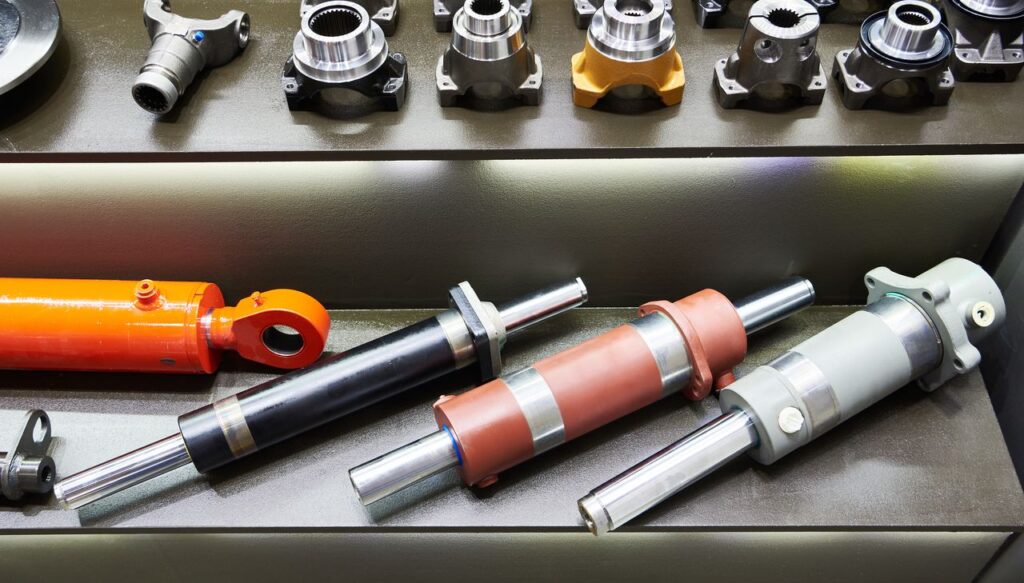When a hydraulic cylinder fails, time becomes one of the most critical factors. Every hour your equipment is out of commission can mean lost productivity and potential revenue. Whether you operate in construction, oil and gas, manufacturing, or agriculture, understanding how long hydraulic cylinder repair takes can help you plan better and reduce downtime.
In Houston, where industrial operations run around the clock, the demand for fast and efficient hydraulic repair is especially high. But how long does it really take to repair a hydraulic cylinder? The answer depends on several factors. In this guide, we break down the typical repair timeline and what influences the duration of hydraulic cylinder repairs in Houston.
1. Initial Inspection and Diagnosis (Same Day to 1 Day)
The repair process begins with a thorough inspection of the hydraulic cylinder. Reputable repair services in Houston often offer same-day diagnostics, especially if you choose a mobile repair service.
During this step, technicians will:
-
Disassemble the cylinder
-
Inspect the rod, barrel, seals, and other components
-
Identify the root cause of the failure (e.g., seal wear, scoring, bent rods)
If it’s a standard repair, a skilled technician can diagnose the issue within a few hours. However, if the damage is more extensive or requires precision measurements, it may take a full day to complete the inspection.
2. Availability of Parts (Immediate to Several Days)
One of the biggest variables in repair time is the availability of replacement parts. Common components like seals and rods may be in stock at local suppliers or already on hand in the repair shop. In that case, repairs can proceed immediately.
However, if your cylinder requires custom parts or OEM-specific components, sourcing them may take longer:
-
In-stock parts: Immediate to 1 day
-
Special order or custom parts: 2 to 5 days (or more)
Some advanced repair shops in Houston have in-house machining capabilities, allowing them to fabricate custom parts on-site. This can significantly reduce wait times compared to outsourcing fabrication.
3. Repair and Rebuild Process (1 to 3 Days)
Once all parts are ready, the actual repair begins. This phase typically includes:
-
Cleaning and resurfacing components
-
Honing the cylinder barrel
-
Polishing or replacing the piston rod
-
Replacing seals and O-rings
-
Reassembly and torque testing
Standard repairs can often be completed within one to two days. However, more complex issues—like a bent rod that needs straightening or a damaged bore that requires sleeving—may extend the timeline to three days or more.
Experienced Houston repair shops often streamline this process by having dedicated technicians handle different stages, reducing total turnaround time.
4. Testing and Quality Control (Half Day to 1 Day)
Before a hydraulic cylinder is returned to service, it must undergo pressure testing to ensure it functions correctly under load. This includes:
-
Leak testing under high-pressure conditions
-
Stroke and performance checks
-
Verification of correct dimensions and tolerances
Quality-focused shops won’t skip this step, even if it adds a few extra hours to the timeline. In most cases, testing and quality control take less than a day, but it’s essential for ensuring long-term reliability.
5. Reinstallation and Follow-Up (Optional, 1 Day)
If you’re using a full-service provider that handles both repair and reinstallation, add another day for on-site reassembly and final checks. Many Houston hydraulic repair services offer mobile teams who can bring the rebuilt cylinder to your site and reinstall it, ensuring everything works properly before signing off.
This is especially helpful for large or integrated systems where proper installation is critical to avoid further damage.
Average Repair Timeline Breakdown
| Stage | Estimated Time |
|---|---|
| Inspection & Diagnosis | Same Day to 1 Day |
| Parts Availability | Immediate to 5 Days |
| Repair & Rebuild | 1 to 3 Days |
| Testing & Quality Control | Half Day to 1 Day |
| Reinstallation (Optional) | 1 Day |
| Total Time (Typical Range) | 2 to 7 Business Days |
What Can Speed Up the Process?
To minimize downtime, here are a few things you can do:
Choose a Local Shop with In-House Capabilities
Look for hydraulic repair shops in Houston that have machining, fabrication, and testing equipment in-house. This cuts down on outsourcing delays.
Opt for Mobile Services
Mobile hydraulic repair units can come to your site for diagnostics and in some cases complete the repair on location.
Keep Spare Parts on Hand
If you frequently deal with the same type of cylinder, consider stocking common replacement parts like seals, wipers, or rods.
Schedule Preventive Maintenance
Regular maintenance can catch problems early, allowing you to schedule repairs in advance rather than responding to breakdowns.
Final Thoughts
In Houston, the typical hydraulic cylinder repair can take anywhere from 2 to 7 business days depending on the complexity of the issue, parts availability, and service provider capabilities. While standard repairs are often completed within a few days, more extensive damage or rare parts can extend the timeline.
By choosing a reputable repair service with mobile capabilities, in-house machining, and a strong inventory of parts, you can significantly reduce downtime and get your machinery back in action faster.
Hydraulic systems are the backbone of many industries in Houston. Taking a proactive approach and working with a reliable repair partner will keep your operations running smoothly—day in and day out.






